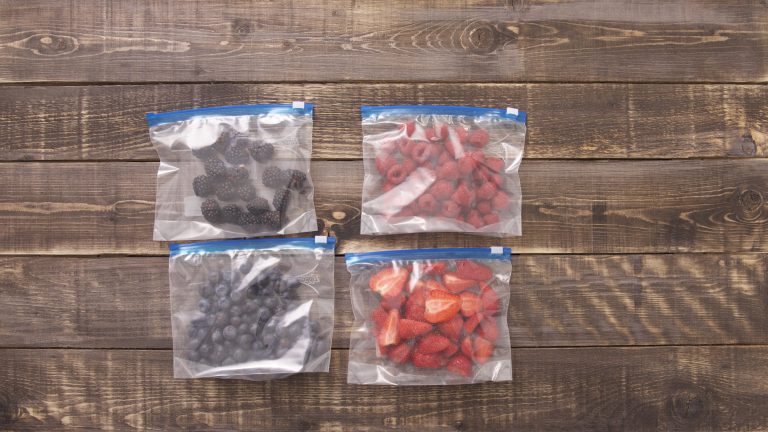Refrigerator Organization 101 January 16, 2017
Refrigerator organization 101 brought to you by the best teacher we know… our very own dietitian, Rebecca! Continue reading to learn how she keeps things tidy, organized, fresh, and FUN in the kitchen.
When that hangry hour strikes, the last thing you want to do is rummage through your refrigerator only to find ingredients missing or – even worse – spoiled. The kitchen should be your happy place and cooking should be a blast, but it’s difficult for that to happen if you can’t even find the ingredients you’re looking for. Talk about a buzzkill. That’s why we turned to HelloFresh’s dietitian, Rebecca — the expert on refrigerator organization. Because however tempting it can be to stuff everything in there, it’s important to be strategic about what goes where in order to keep food fresher for longer and prevent cross contamination. So yes, there is a method to this madness.
1. Track the temperature
Your refrigerator temperature should be set to 40ºF or below at all times. (For your freezer, the magic number is 32ºF.) Any warmer and you run the risk of growing harmful food bacteria.
2. Store herbs properly
When it comes to tender herbs like tarragon, parsley, cilantro, and mint, the first thing you should do is snip off the ends and toss out any wilted leaves. Place in one inch of water (like a flower bouquet) while sealing the top with an overturned plastic bag. Store in the refrigerator, refreshing the water every day or two if it looks cloudy.
READ MORE: How To Store Fresh Herbs & Veggies
3. Store meat properly
Raw meat and fish should always be wrapped up tight and stored away from other foods. If you have a meat compartment, that’s the way to go. If not, store on the bottom shelf to prevent juices from leaking onto other foods.
4. Don’t overstock
It’s important for air to circulate around the food in your refrigerator to prevent spoilage, so resist the urge to overstock!
5. Keep eggs and milk out of the door shelf

Eggs, milk, and other quick-to-expire items should not be placed in your fridge door where temperatures can fluctuate. Instead, reserve this space for condiments.
6. Practice “first-in-first-out”
Older items should always be towards the front with newer items behind. This way, you’ll reach for the older ones first and use ’em up before they expire. And as we all know, less food waste means more mula in your pocket. Cha CHING.
TIP: Before schlepping to the grocery store, take inventory of your refrigerator shelves. It’s the best way to avoid those what-can-I-possibly-do-with-three-tubs-of-sour-cream type situations.
7. Label leftovers with a date
We’ve all been there. We whip up something that exceeds our wildest expectations and think… I can’t wait to eat the leftovers. One day passes, and then another, and before we know it we’re standing in front of an open refrigerator wracking our brains trying to remember when we made it and whether it’s still edible. Food safety is some serious business, people, so be sure to label your containers with a name and date. C’mon, it takes 30 extra seconds. You can do it.
READ MORE: Quick Tips To Transform Your Leftovers
8. Embrace your freezer
Just because certain foods aren’t looking shiny and new doesn’t mean you have to toss them out. Not so fast. Your freezer is the perfect place to store fruit, bread, meat, and even potatoes.
Now that your refrigerator is organized, it’s time to get cooking. But first — check out these ingenious kitchen hacks that’ll save you a whole lotta time while you slice, dice, and saute like a pro.











